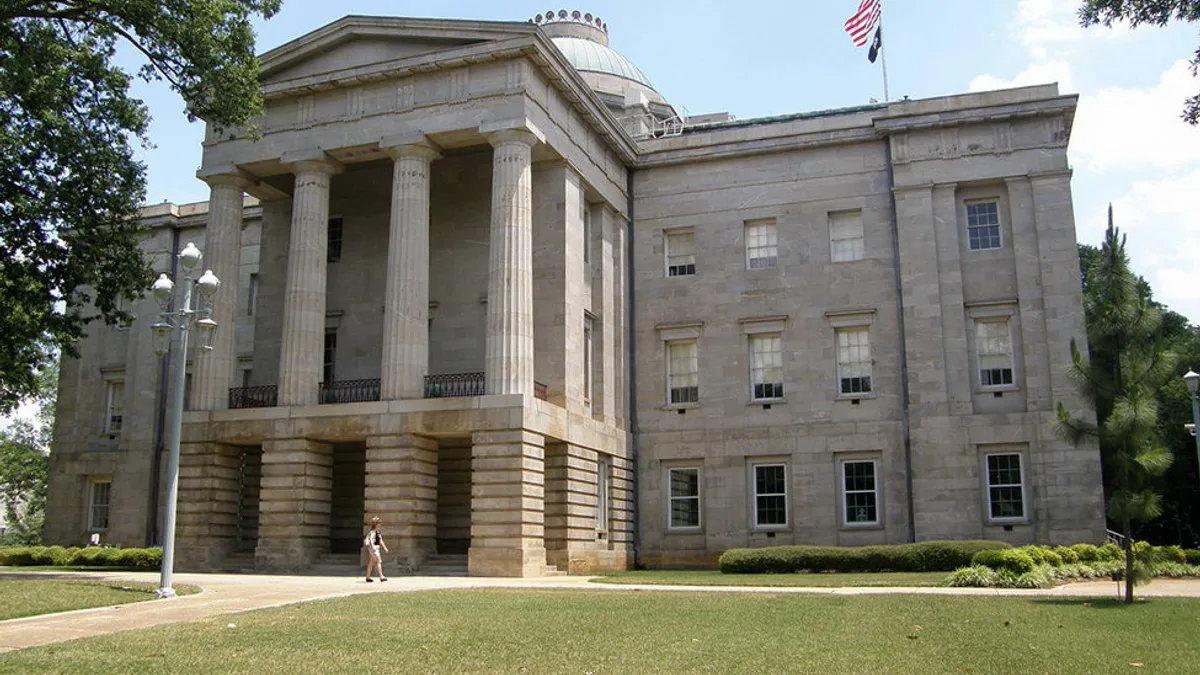Dive Brief:
-
North Carolina cut the controversy from a long-suffering Senate energy bill that would have substantially shifted Duke Energy's rate structure.
-
The state's House of Representatives and Senate on Tuesday agreed to eliminate entirely the portion of Senate Bill 559 that would have allowed regulators to approve multi-year rate plans for Duke Energy. The motion passed the Senate unanimously Wednesday. Stakeholders and legislators had raised concerns over the hasty adoption of such a policy, which they feared could remove critical oversight on the utility's spending.
-
Under Democratic Gov. Roy Cooper's draft clean energy plan, a multi-year rate plan is still an option, but must be addressed "through a better defined and stakeholder-centered utility planning process," according to stakeholder engagement documents related to developing the governor's plan.
Dive Insight:
Several groups were taken off-guard by the proposed legislation, first unveiled in April. Its introduction lacked a formal stakeholder process, which legislators and clean energy groups say is essential to implement such a dramatic shift in utility ratemaking.
"The biggest concern that was raised on the floor was that this is the biggest paradigm shift in North Carolina electricity regulation in 100 years," Peter Ledford, general counsel at the North Carolina Sustainable Energy Association, told Utility Dive in August when the bill was stalled last minute in the House.
The original version of the bill would have allowed the state's utilities commission to approve rate cases for up to five years, which the utility had indicated could be used to get approval of coal ash cleanup costs or grid modernization projects. Now, those rate mechanisms may still be adopted, but will have to go through a more robust stakeholder process first.
"The multiyear rate plans and return on equity banding, all of those modern tools were recently included for conversation, if you will, in the governor's clean energy plan," Duke spokesperson Paige Layne told Utility Dive. "And so while they were removed from 559, [Cooper's] clean energy plan recognizes there is a need to modernize the ratemaking process in the state."
The governor's draft clean energy plan, released in August, does address multi-year ratemaking as a potential "utility incentive" as the state moves to cut emissions between 60% and 70% by 2030, relative to 2005 levels, but notes more stakeholder input will be necessary.
Duke's "proposed legislative changes to the ratemaking process without a prior stakeholder process once again raises concerns over lack of consensus or public input on potential performance-based ratemaking tools as per national best practice as part of any multi-year ratemaking law," reads the October stakeholder engagement document.
Newly-amended and passed SB 559 will allow Duke to recover storm-related costs through securitization. The bill is headed to the governor's desk.















